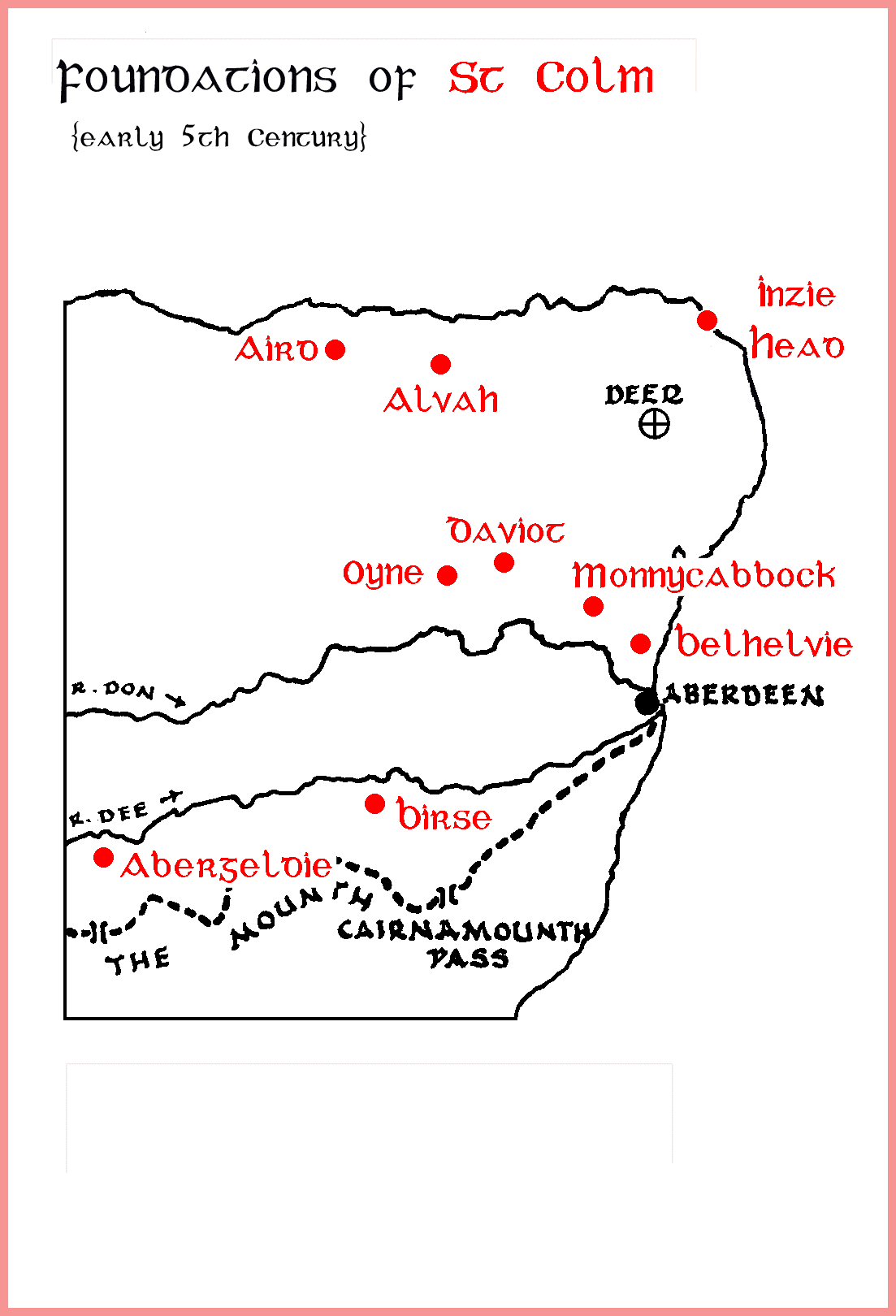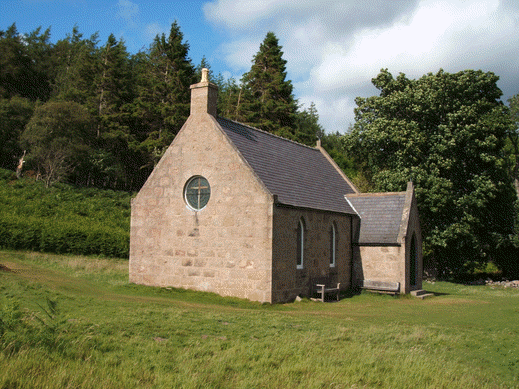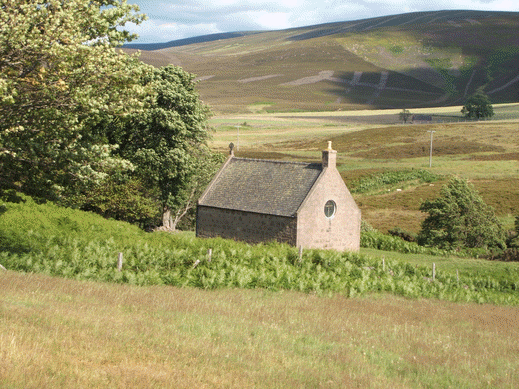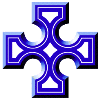St Colm
We must turn our thoughts back to "the start of the sixth age" and allow ourselves to dream of the sound of an ancient chant coming from within the tiny church at Deer in order to find our friend Colm. He had come with Drostán, Fergus and Medan to establish a muinntir amongst the Picts of Buchan as the sixth century dawned upon the rolling countryside inhabited by the Taizaloi and Ce tribes.
But this gentle saint has been dealt a fearful blow by history - much of what he accomplished has been ascribed to another! One of the most ancient books of Scotland, the Book of Deer, started what is a quite understandable problem. Centuries after Ss. Drostán, Colm and Fergus had obtained their heavenly reward, during the Gaidhealic ascendancy in Pictland, their names were removed from their proper historical setting and woven into legends intended to create a belief in the priority of the Roman mission in Pictland, and to support the Romanized Gaidheals in the usurpation of the property of the old Pictish Church. In the famous legend, entered in the Book of Deer by an eleventh-century Gaidhealic hand, St Colm is boldly transformed into St Columba {the great Columcille} who was a Gaidheal; and St Drostán the Briton, head of the mission at Deer, is subordinated to him. These reckless "fabulist" authors were probably blissfully unaware that Drostán laboured amongst the Picts of Buchan before Columcille had even begun his work in Ireland, let alone come to Hy {Iona}.

Above: Churches associated with St Colm.
Furthermore, in Columcille's time, the Gaidheals regarded the Picts as their implacable foes and were mediating to get back the parts of Dalriada out of which they had been hunted by the Pictish sovereign. To this end, Columba had ordained to the Gaidhealic or Scotic throne of Dalriada, Aedhan, the arch-enemy of the Picts, and the man who betrayed the very Britons who had helped him to repair his broken fortunes when he was a wanderer from his own people. Now Drostán was, indeed, Aedhan's uncle, his sister being Aedhan's mother, but, in order to carry his mission to the Picts, Drostán must have divorced this relationship as far as was possible. Another legend, the Legend of Fergusiannus,1 credits the missionary work of Colm's colleague, St Fergus of Buchan and Caithness, to a certain Romanized Celt of late date bearing the same name. The object of this 'fabulist' was evidently to make it appear that theF beginnings of the Roman mission in Pictland were much earlier than was actually the case and, for many centuries, his ambition in part succeeded. If other evidence is needed it can be found in the names of the ancient dedications of the churches and holy wells. They are, largely, dedicated to St Colm which has been assumed to be a shortened form of St Columba. However, where authentic dedications to Columba are found they are invariably of the approximate form Kil-columcille. No, these ancient Pictish sites shout out the names of their founders to ears that are only now becoming aware of the ancient Pictish Christian traditions which far outdate any Romanized form of Christianity in these parts.
.jpg)
Above: The remains of St Colm's ancient church at Abergeldie (NGR NO286947)
for long wrongly attributed to St Columba
On the River Dee, about 2km downstream of the Chapel shown above, near Abergeldie Castle, there is a fishing pool known as Pol Mahalmic(k) or Pol MoCholmóc, a very obvious and ancient commemmoration of St Colm.


Above: Two views of the present Chapel in the Forest of Birse.
There is a Chapel, still, within the Forest of Birse {NGR NO 532906} that some have erroneously thought to be built on a site of some antiquity that was linked with St Colm. No doubt they were encouraged in their belief by the wonderfully 'romantic' nature of its location. In fact, the Birse Parish School Board built the church, which also served as a school. The present church (shown above) replaces a church built in 1790 for the Society for the Propagation of Christian Knowledge. The current building ceased to be a school in 1933, when there were only 3 pupils. The school teacher's house which used to sit beside the chapel (and which is now only a ruin) was abandoned in 1896, and the teachers lived thereafter at the nearby farm of Ballochan.
It is stunning to see modern scholars still being tempted today into swallowing the same 'fabulism' and wantonly ascribing swathes of early church sites in the north-east to the alien St Columba (see Taylor, Innes Review 2000).
St Colm's sites are to be seen in abundance scattered across Buchan and also at one more southern site (possibly two) which suggest that he and/or his followers ventured as far afield as the southern banks of the River Dee - as far as Birse and Abergeldie.
References:
1. Skene, W.F. (1877) Celtic Scotland: A history of Ancient Alban, Edinburgh: David Douglas. 2 Volumes. ii., p. 232.
small(transp).png)
